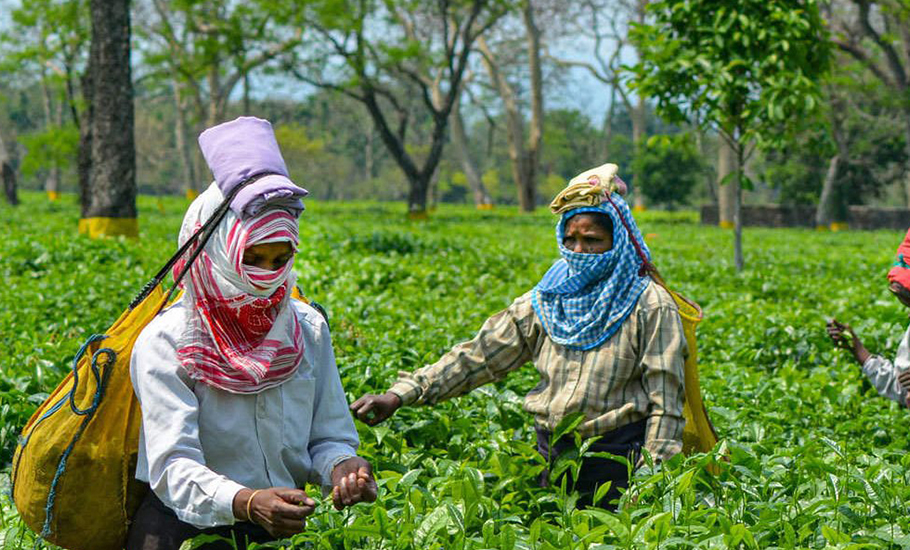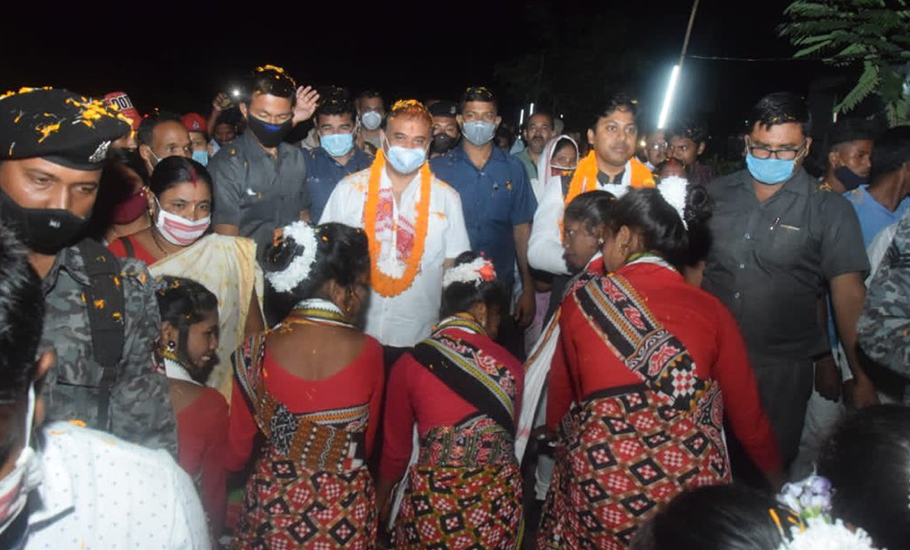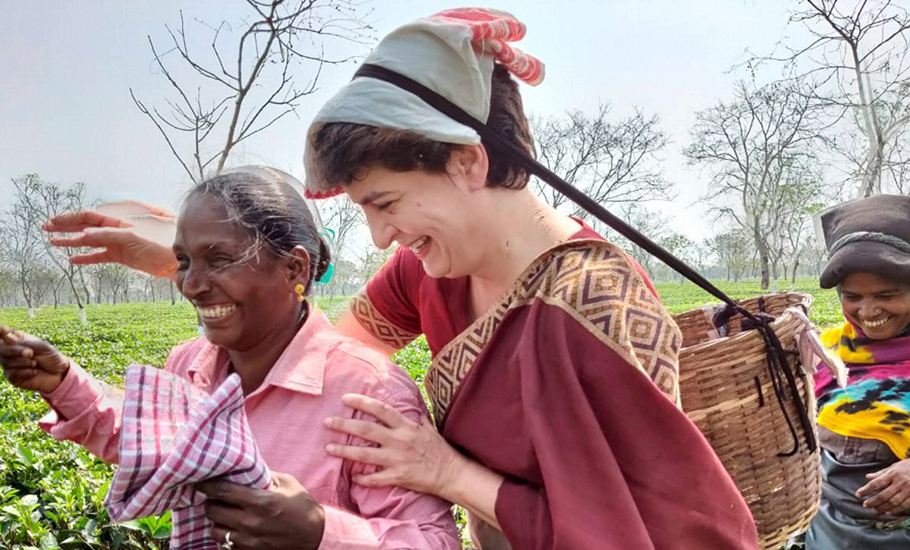
- Home
- India
- World
- Premium
- THE FEDERAL SPECIAL
- Analysis
- States
- Perspective
- Videos
- Sports
- Education
- Entertainment
- Elections
- Features
- Health
- Business
- Series
- In memoriam: Sheikh Mujibur Rahman
- Bishnoi's Men
- NEET TANGLE
- Economy Series
- Earth Day
- Kashmir’s Frozen Turbulence
- India@75
- The legend of Ramjanmabhoomi
- Liberalisation@30
- How to tame a dragon
- Celebrating biodiversity
- Farm Matters
- 50 days of solitude
- Bringing Migrants Home
- Budget 2020
- Jharkhand Votes
- The Federal Investigates
- The Federal Impact
- Vanishing Sand
- Gandhi @ 150
- Andhra Today
- Field report
- Operation Gulmarg
- Pandemic @1 Mn in India
- The Federal Year-End
- The Zero Year
- Science
- Brand studio
- Newsletter
- Elections 2024
- Events
- Home
- IndiaIndia
- World
- Analysis
- StatesStates
- PerspectivePerspective
- VideosVideos
- Sports
- Education
- Entertainment
- ElectionsElections
- Features
- Health
- BusinessBusiness
- Premium
- Loading...
Premium - Events

Repackaged promises: Assam govt selling bitter brew to tea tribe

Sardar bole kaam kaam/ Babu bole dhori aan/ Saheb bole libo pither cham/ Oii bideshi Sham/ Phakidiye anilo Assam (Sardar says work harder/ The supervisor says haul them here/ The saheb [tea garden owner] says I will skin them/ The white-skinned foreigners brought us to Assam by deceit) The plight of the tea tribe community of Assam as described above in the popular folk song has not changed...
Sardar bole kaam kaam/
Babu bole dhori aan/
Saheb bole libo pither cham/
Oii bideshi Sham/
Phakidiye anilo Assam
(Sardar says work harder/
The supervisor says haul them here/
The saheb [tea garden owner] says I will skin them/
The white-skinned foreigners brought us to Assam by deceit)
The plight of the tea tribe community of Assam as described above in the popular folk song has not changed much over a century after they were brought to the state ostensibly by deception — albeit the colour of the saheb’s skin.
Even though the community has now become more assertive about their identity, ethnicity and rights, the response of the present-day rulers in countering this new-found determination of the community is the same-old pretence, packaged as benevolence.
To sample the approach, one need not look far beyond. The community made headlines recently when the Assam government announced its decision to reserve 24 MBBS and three BDS seats for students from the tea garden community working across 803 major tea estates and numerous small tea gardens in state-run medical colleges.
The announcement has been touted as a major welfare measure for the community, which for long has been demanding the Scheduled Tribe status. In reality, however, the government has increased the MBBS quota by just two seats.
“The reservation was already there for several years. Last year, 22 MBBS seats were reserved for the tea tribe. This year it has been increased to 24 because the number of medical seats has increased in the state with the setting up of new medical colleges,” said Bhagirath Karan, a prominent tea tribe leader of the BJP.
Confirming the pre-existence of the quota, president of the Assam Tea Tribes Students Association (ATTSA), Dhiraj Gowala, said the number of reserved seats for the community in dental medicine (BDS) remains unchanged.
“The only notable change this time is the proportionate division of the reserved seats for the tea garden communities residing in the Brahmaputra Valley and the Barak Valley. As per the new division, the Brahmaputra valley gets 18 MBBS and two BDS seats while Bharak Valley’s share is six MBBS and one BDS seats,” Gowala added.
Gowala, however, welcomed the decision as he felt “something is better than nothing”.
In the run-up to the 2014 general elections, the BJP had promised Scheduled Tribe (ST) status for the tea tribe besides five other communities – Koch-Rajbongshi, Sootea, Moran, Tai Ahom and Matak. The ultimate deception was when the BJP national president JP Nadda ahead of the 2021 assembly elections asserted at a public meeting in Silchar that the Narendra Modi government had already granted ST status to the six communities as was promised by the party before the 2014 elections.
As Nadda’s assertion left the aspiring communities seething, senior BJP leader and current chief minister Himanta Biswa Sarma tried to clear the air stating the state government would soon submit its report to the Centre on the issue.

After a lapse of six months since the BJP returned to power, nothing has been heard yet about granting of the promised ST status to the communities.
“On October 17, we had a meeting with the chief minister over our [ST] demand. There he told us that the Home and Tribal Affairs Ministry will soon take a decision in this regard,” Gowala said.
Who are these tea tribes?
The over five million-strong community, presently known as tea tribe, is a unique Assam-specific ethnic group originating from heterogeneous tribes who were brought to the state from various parts of the country in the 19th century by British tea planters. The first batch of labourers was brought to work in tea gardens of Assam from the Chotanagpur division of present-day Jharkand way back in 1841.
The tea tribe comprise present and past plantation labourers who live mostly in dingy and unhygienic labour lines of the tea estates and slum-like villages at the periphery of the estates. Lack of basic facilities, malnutrition, illiteracy, epidemic, addictions to locally brewed liquor are the prevailing common plights in these often remote localities.
In the last over one-and-a-half centuries, though the community has grown considerably, forming around 20 per cent of Assam’s total population, their socio-economic condition has not changed much.
“Workers on tea plantations in the Assam region of India are systematically denied their rights to a living wage and decent working and living conditions. The fact that they are unable to meet their basic living costs is starkly illustrated by our finding that 50 per cent of the households that researchers visited on behalf of Oxfam owned ‘below poverty line’ ration cards issued by the Government of Assam,” pointed out an Oxfam research report published in October 2019.

“Tea workers also struggle to get timely and good quality healthcare, access clean drinking water, and provide their children with decent education,” the report further stated.
Starvation too is not very uncommon. In 2012, as many as 13 tea labourers died of starvation induced by prolonged lockout in southern Assam’s Bhuban Valley Tea Estate. The community continues to be one of the most impoverished and fares poorly on most human development indices.
In a survey report submitted to the Ministry of Women and Child Development by the Centre for Women’s Studies, Dibrugarh University stated that a comparative analysis of working conditions of the women workers from British to present-day times reflects a “downward trend”.
“During interactions with elderly women workers, it was found that life in the tea gardens and the working conditions during the time of the Britishers were much better than the present times. They had job guarantee, their working hours were less and their burden of work was minimal,” the report said.
“Even with fewer wages, they could manage their household due to the good quality ration and other amenities provided by the colonial management. However, in the post-colonial times, even when the wage structure improved, the ration and other amenities provided to them are not sufficient enough to run a household,” added the survey report submitted in 2017.
Growing production, falling living standards
In sharp contrast to deteriorating working and living conditions of tea garden workers, tea production in India has increased by 250 per cent since independence. With an estimated annual production of about 630-700 million kg, Assam contributes more than half of India’s total tea production.
Assam alone produces more than half of India’s tea production. The estimated annual average production of tea in Assam is about 630-700 million kg. The average price of Assam tea at the auction centres is Rs 150-Rs 210 per kg.
The growth of the industry certainly did not correspondingly benefit the community that toils and sweats for it.
Apart from contributing significantly in the state’s economic growth, the community that constitutes 20 per cent (around 70 lakh) of Assam’s 3.5 crore population also play a major role in shaping the political fortune of the state. The community is a decisive factor in about 45 of the state’s 126 assembly constituencies.
Despite being a politically important demography, the political parties over the years have only used the community as a vote bank without bothering to empower them, socially, economically and even politically.

Until recently, the tea tribe along with religious minorities had been a constant source of support for the Congress since the first general election of 1952. As long as Ali [a disparaging reference to Muslims] and Coolie [another pejorative term for tea labourers] were with the Congress, the party would always win in Assam, former Congress president Dev Kanta Barooah, who had also coined one of the most ignominious phrases of Indian politics “India is Indira and Indira is India,” once quipped rather crudely, signifying the electoral importance of the community.
The rise of the BJP in Assam in 2014 is largely attributed to the change of political course by the community.
The change of course though has changed the political fortune of the BJP, particularly in tea garden-dominated Upper Assam districts. The community is still caught up in the labyrinth of false promises and illusions.
“From the Congress, to the AGP and now the BJP… all that they have done is played dirty politics with us,” Gowala rued.
